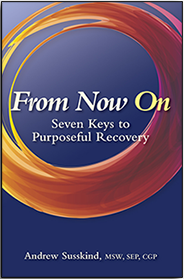Reliable relationships are what help infants regulate their nervous systems, and attachment patterns are founded in this connection between a baby and its caregiver. Unfortunately, many of you did not have emotionally dependable parents, leaving you at risk for compulsive behaviors.
In 1988, British psychoanalyst John Bowlby wrote A Secure Base, which sparked a vital conversation among clinicians and researchers about the bond between an infant and its primary caregiver. Dr. Bowlby developed specific categories for the attachment styles he observed. These styles mainly refer to the child’s reaction to separation from its caregiver, perceived threats in the environment, and possible harm of any kind. The conclusion was that if you have a secure attachment with your caregiver, you’re able to regulate your nervous system more easily and show more resilience. But if you had an insecure attachment, self-regulation becomes more challenging in childhood, as well as in later life.
Although there are four major categories in the attachment literature, the two most common among sex addicts are Avoidant Attachment and Anxious Attachment. The other two categories are Secure Attachment and Disorganized Attachment. Secure Attachment occurs when there is a good-enough parent, and generally speaking, children with addictive, compulsive patterns don’t fall into this category. On the opposite side of the spectrum is Disorganized Attachment, which refers to someone who grew up in a highly chaotic and unstable environment and developed little to no capacity for attachment due to an absent primary caregiver. Babies who grew up in a crowded orphanage would be one example, and those with Disorganized Attachment have a steeper attachment mountain to climb.
Here I want to focus on two attachment patterns in the context of the nervous system.
Avoidant Attachment
When a primary caregiver lacks the capacity to respond effectively to your needs, you experience them as emotionally unreliable. You become counter-dependent and self-sufficient, or “need-less and want-less,” as Pia Mellody describes it. The misattuned parent creates a child who likewise denies needing support from others and has an avoidant attachment. This is the birthplace of love avoidance (sometimes called intimacy avoidance). Individuals learn to build relational walls to prevent feeling disappointed or overwhelmed.
In its most extreme form this attachment style shows up later as sexual or emotional anorexia, a pattern of profound isolation and loneliness. In either case, self-soothing or compulsive sexual behavior may be an attempt to regulate the nervous system. Turning away from mutual regulation with others becomes the survival mechanism of choice because people are seen as emotionally undependable. Chronic masturbation is a prime example of a misguided effort to regulate the nervous system.
Anxious Attachment
When a primary caregiver is responsive and nurturing on some occasions, yet intrusive and insensitive at others, you’re left anxious, insecure, and sometimes ambivalent, not knowing which version of the parent will show up at any given moment. You walk on eggshells and become highly distrustful, all the while feeling starved for contact. This type of inconsistent attunement results in an anxious attachment.
This is how love addiction and obsessive fantasy originate. In order to regulate the nervous system, the child seeks some type of soothing from the caregiver but never knows when, or if, it will come. As a result, the child is often desperate for contact and love that are only intermittently available.
In Part Two we will explore how attachment patterns influence long term recovery from compulsive sexual behavior.




